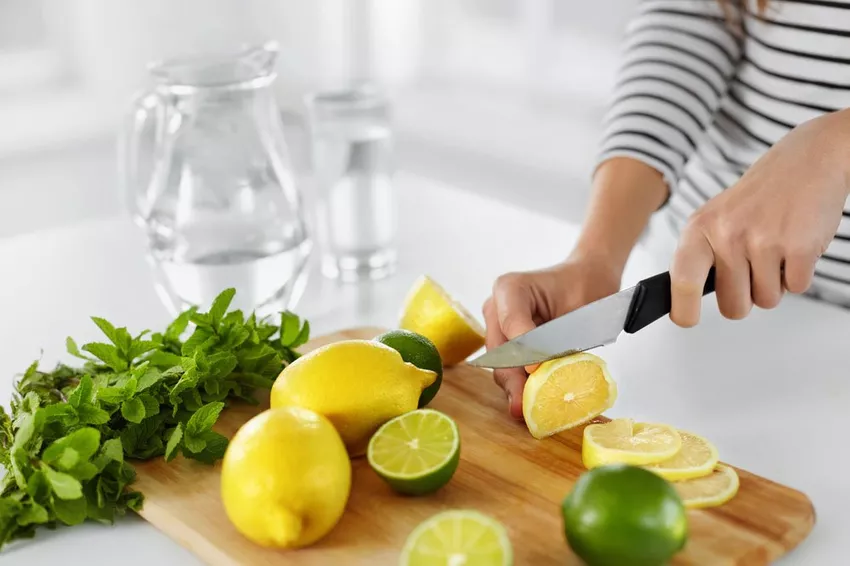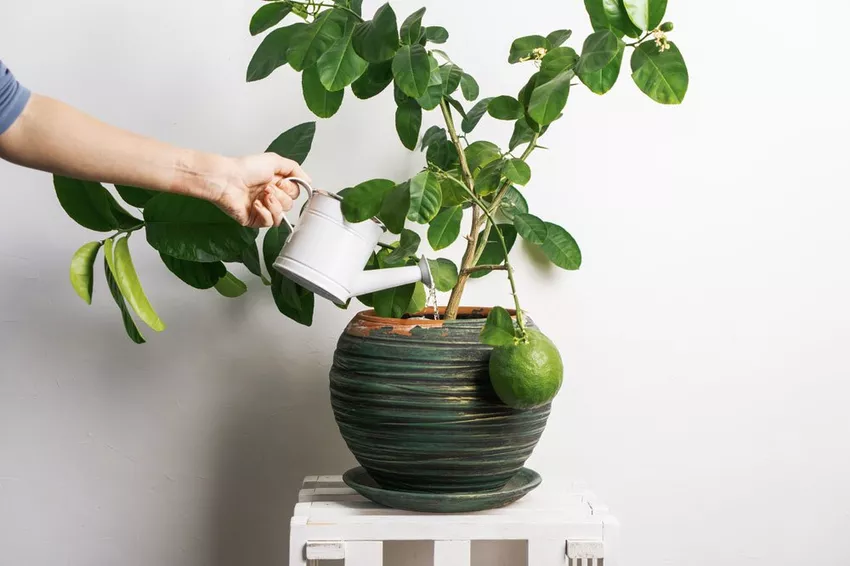If you want to grow a lemon tree yourself, you need the pits of a fresh organic lemon. The full instructions are here.
 If you want to enrich your flower window with exotic charm, we recommend growing a lemon tree. You don't need to have a green thumb to grow a lemon tree from seeds yourself. The later plants can convince in the living room or enrich the balcony and terrace with Mediterranean charm. If you are patient, you can harvest your own lemons, but it will take a few years until then.
If you want to enrich your flower window with exotic charm, we recommend growing a lemon tree. You don't need to have a green thumb to grow a lemon tree from seeds yourself. The later plants can convince in the living room or enrich the balcony and terrace with Mediterranean charm. If you are patient, you can harvest your own lemons, but it will take a few years until then.
Not all lemons are the same
Lemons from the supermarket actually all look the same. Yes and no - there are actually different strains with different characteristics. If you want to grow a lemon tree, you should be familiar with the individual varieties.
| Lemon variety | Features |
| Meyer Lemon | » originates from China » juicy fruits » less sour » thin-skinned |
| Eureka | » widespread in the USA » early maturity » rounded leaves » few seeds |
| Primofiori | » comes from Sicily » juicy fruits » intense taste » few seeds |
| Lisbon | » originates from Portugal » widespread |
| Lime | » comes from the Mediterranean region » very juicy fruits » sweet taste |
Which seeds/seeds can be used to grow lemon trees?
 Under no circumstances should seeds from bags or stored lemon seeds be planted. You have the best chance of success if the seeds are fresh. These should come from an organic lemon.
Under no circumstances should seeds from bags or stored lemon seeds be planted. You have the best chance of success if the seeds are fresh. These should come from an organic lemon.
How to remove the cores
The fruit is cut open in the middle. The cores can then be removed. Before planting, the pulp is removed from the seeds under running water - a tea strainer is helpful.
Tip: The seeds of ripe lemons have the highest germination capacity.
In which substrate are the nuclei grownset?
It is important that the soil used is sterile. These conditions are met by seed compost. If you don't have potting soil at hand, you can use simple potting soil. However, this is usually tainted with germs, especially if it has been stored unprotected in the garden or basement for a long time.
Tip: Conventional potting soil can be sterilized by heating the substrate in the microwave for two minutes. The highest possible heating level should be used. Before the seeds can be used, the substrate must cool down sufficiently.
Which planter is suitable for growing a lemon tree?
The properties of the future plant should already be taken into account when planting. Even the seedlings form long taproots. Therefore, growing in yoghurt pots or egg cartons is not an option!
Instead, a larger plant pot should be used. Higher pots are recommended, which are also commonly used for perennials that can be bought in stores.
Note: Plant pots that have already been used must be thoroughly cleaned before use.
Drawing a lemon tree - step by step
It is advisable to sow several lemon seeds. There is no guarantee that all seeds used will ultimately germinate. The distance between the individual cores should be at least 3 cm.
- Cut the lemon
- Remove cores carefully
- Rinse the seeds
- Select planter
- Fill the planter with potting soil
- Push seeds into the ground
- Cover the seeds by one to two centimeters with substrate
- Slightly moisten the soil
- Place the planter warm and bright
- Wait for germination
Often the first green appears after just one week. After 14 days, all seeds should bear cotyledons. Anyone who has put a freezer bag over the planter does not have to remove it yet. The plants are protected in the mini greenhouse and can develop vigorously.
Pouring seeds - but correctly
Keeping the substrate moist requires some finesse. The seeds can only germinate in moist soil. At the same time, the substrate must not be too wet, otherwise the seeds will rot.
One tip for ensuring high humidity and thus accelerating germination is to create a mini greenhouse. If you don't have a mini greenhouse, you can do it yourself and put the plant pot in a freezer bag.This is closed and placed in a warm place.
To prevent the seeds from getting moldy, open the freezer bag every day so that the air can circulate. Water as needed.
The correct handling of young plants
If the seedlings have developed well in the planter, they are isolated. Each young plant gets its own plant pot and is now cultivated separately. After the ice saints, this can also be done outdoors from mid-May.
Initially, the lemon trees get a sheltered spot on the balcony and terrace. Sturdy plants can also stand in a sunnier place and get wind or even a light summer rain.
Lemon tree care - what should be considered?
 There are a few things to consider when caring for Mediterranean plants.
There are a few things to consider when caring for Mediterranean plants.
Water the lemon tree properly
Lemon trees prefer to be a little drier than too wet. The plants quickly show when they are thirsty by their curled leaves.
Note: Leaves that appear dried up can also indicate waterlogging. It is therefore better to test with your finger whether the substrate feels dry and whether the plant really needs water.
Lemon trees do not like hard and calcareous water. Rainwater, which can be collected in a barrel in the garden, is best tolerated.
Fertilize the lemon tree properly
Cultivation soil contains all the important nutrients that plants need in the first year. From the second year, fertilize from April to October. Organic citrus fertilizer optimally supplies the plants with nutrients.
Our recommendation:
Note: The condition of the leaves indicates a possible nutrient deficiency. If the leaves turn yellow and only the leaf veins are still green, an iron-rich fertilizer should be used.
Winter lemon tree properly
Lemon trees should winter bright and sunny. As one of the few potted plants, the lemon tree can overwinter in the living room. Other alternatives would be the conservatory, the bedroom or the stairwell.
When will my lemon tree bloom?
Anyone who grows a lemon tree themselves probably asks this question. Unfortunately, there is no guarantee of flowering and fruiting. The kernels cannot be seen to indicate whether they are fertile or not.
A large number of seeds are sterile and therefore unable to produce flowers. Therefore the advice again: always plant several cores.
In any case, it takes quite a bitpatience until flowering begins. Depending on location, temperature and plant care, it can take up to twelve years before the first lemon harvest arrives.